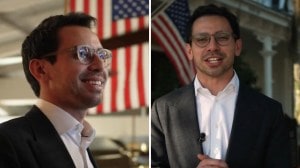By Naresh Ahuja
In traditional doctor-patient conversations, obstacles often exist in understanding at every step. The complexity of medical information becomes a difficult wall, leaving patients grappling with inadequate comprehension and making lesser-than-ideal healthcare decisions.
Breaking down barriers in doctor-patient communication requires a multifaceted approach that encompasses various strategies. Promoting plain language communication by simplifying medical jargon ensures that patients can comprehend the information conveyed. Active listening skills play a crucial role in acknowledging and addressing patients’ concerns, leading to a more open and effective dialogue. Integrating technology, such as telemedicine platforms, patient portals, and secure messaging systems, facilitates ongoing communication and provides additional channels for patients to seek clarification and guidance.
Moreover, addressing health literacy at a systemic level, creating patient-friendly educational materials, and encouraging questions from patients contribute to a more comprehensive approach. Using regional language for communication with patients who have limited English proficiency breaks down language barriers, while empathy and emotional support recognize the importance of the emotional aspects of healthcare. Establishing feedback mechanisms, such as surveys, allows patients to express their thoughts on the quality of communication, providing valuable insights for healthcare providers to continuously improve their communication strategies. By adopting these approaches, healthcare professionals can work towards creating an environment that prioritizes effective communication, ultimately leading to improved patient understanding and better health outcomes.
However, the pivotal shift comes with the advent of modern medical communication tools, welcoming a new era where professional medical information, captivating anatomy illustrations, and exclusive designs redefine the landscape of doctor-patient discourse. These innovative tools not only bridge the communication gap but also transform patient education with cutting-edge desktop inputs.
Consider the scenario where a doctor explains the procedure of angioplasty to a patient. Enter the therapy boards with illustrations and anatomical real-look models – a visual feast that simplifies the anatomical complexities of the heart. Through these detailed and compelling visuals, the doctor navigates the world of medical complexity, ensuring the patient not only hears but sees the essence of their condition. This visual engagement not only enhances comprehension but also empowers patients to actively participate in their healthcare journey.
Moreover, the benefits extend beyond the consultation room. These tools contribute to imprinting medical knowledge in the minds of patients, who are then psychologically empowered to understand what the doctor is saying and make better decisions for themselves.They help the patients and caregivers to better manage their disease, have a proper understanding of symptoms, helps in early detection of diseases and prevents critical medical events. The exclusivity and security of engagement opportunities fostered by this content create a virtuous cycle of trust between doctors and patients. It’s not merely about conveying information; it’s about creating meaningful connections that enrich the healthcare experience.
In an era where information overload is rampant, these tools serve as navigational aids, guiding patients through complex medical details and providing a human touch in the process. In conclusion, breaking down the barriers in doctor-patient conversations is not just a matter of technological advancement; it’s a phenomenal shift in healthcare communication. The fusion of professional medical information, captivating illustrations, and exclusive designs and models of human anatomy offers a transformative experience, empowering patients and fostering a holistic approach to healthcare. As we navigate this brave new world of medical communication, let’s not just break down barriers but build bridges towards a future where understanding thrives, and healthcare becomes a shared journey of knowledge and empowerment.
(The author is a Founder and CEO at SMS Scientific Products Pvt Ltd. Views expressed are personal and do not reflect the official position or policy of the FinancialExpress.com.)








